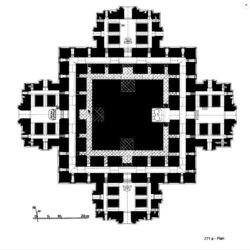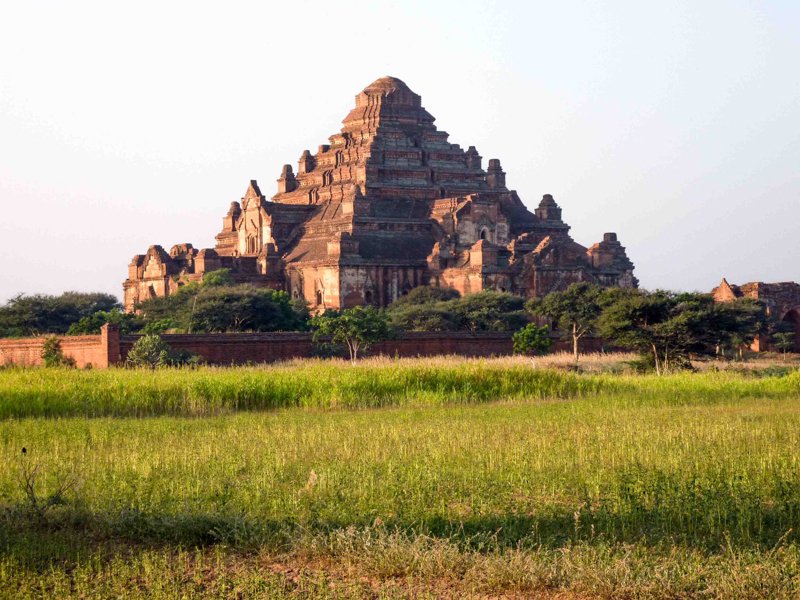Location: SE of Bagan
Inscription inside entrance hall
An inscription inside the entrance hall dates to 1165. It lists bonded servants, including female singers and dancers. Along with that there are inventory lists, a monastery dedication. There’s a warning for anyone allowing the temple to fall into ruin, “may the rice and curry they eat, the water they drink, the house they live, poison them!” Paul Strachan (from Luce from what I can gather) attributes the authorship to Middle Princess Ajawlat, who was perhaps a daughter to Sithu I, who was probably the builder instead of the tyrant king Narathu as has been suggested also. However, there are no inscriptions naming the builder or the date it was built.

Construction and Architectural details
Modeled on the cruciform design that was used for the Ananda. It’s got four concentric entrance halls of equal dimensions. Two surround the central core (like Ananda) but the inner corridors were bricked up at the time of construction (as also stated below). Passageways leading to it were also bricked up. I wonder what’s in there, eh?
There were speculations that Sri Lankan troops did it to humble the king but there is no evidence and it makes no sense that there was ever an invasion like that. The Glass Palace Chronicles puts the blame on a ruthless king at the time named Narathu (1113-1169). Or maybe it was bricked up to provide better structure to the heavy temple.
On the east side a large Buddha sits inside the core. Here the inside corridor was completely sealed so there is no way to know if Buddha images were planned for the other 3 sides, like there are at the Ananda.
The Dhammayangyi differs from what Stadtner calls the other “leviathans” at Bagan which are the Htilominlo, Sulamani, Thatbyinnyu and Gawdaw-palin. These all have a separate second story with a large Buddha. Instead the Dhammayangyi was built with receding square terraces. The lowest ones have sloping roofs like at the Ananda.
To the side of the entrance, there was an ancient monastery that lived in a corner of the compound. It shows evidence of how the monastic units were constructed using timber beams into the brick at a regular spacing. Of course, only the holes remain. The wood is long gone. There was an inner chamber in the center.
Dhammayan-gyi is the largest temple in Bagan. Its presence dominates the landscape of the plains southeast of the Walled City. The inner corridor was bricked up at the time it was built for unknown reasons. The top was in ruins long before the 1975 earthquake and it was never restored, wisely, according to Donald Stadtner in his book Ancient Pagan.
The King Narathu story
In the Bagan Monuments book, it says the name may be derived from Dharmaramsi which means the rays of Dharma. This books posits that it was built in 1163-1165 by King Narathu (Kalagyamin) who was killed by eight Indian assassins sent by King Pateikkaya from India. Or it could have been that Sinhalese assassins sent by the kind of Ceylon to avenge the death of his daughter, one of Narathu’s queens who he killed. This is all in the Chronicle which has been challenged by later research as mentioned above.
References:
Ancient Pagan: Buddhist Plain of Merit, Donald Stadtner, River Books, 2013
Pagan: Art and Architecture of Old Burma, Paul Strachan, Kiscadale Publications, 1989
Guide to Bagan Monuments by Min Bu Aung Kyaing, U Zaw Min Aye (Zaw Press), 2007
Inventory Of Monuments In Bagan, Pierre Pichard, UNESCO, 8 volumes, 1992-2001
